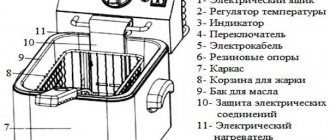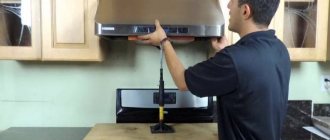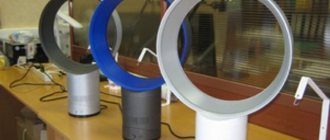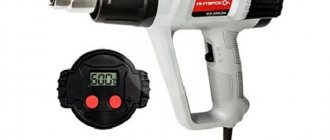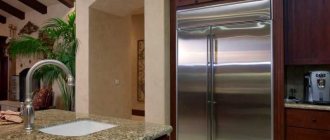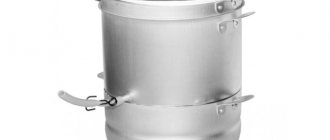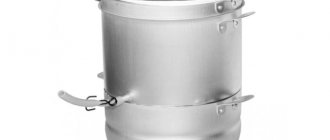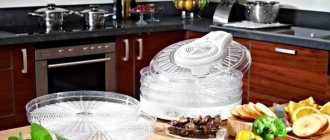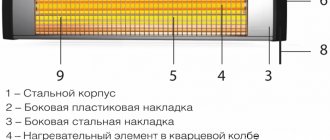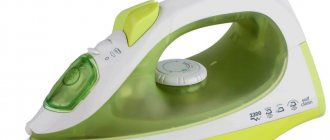Hood in the kitchen - an element of the interior
The first step towards choosing a hood is selecting the width of the hood. A hood that does not get lost and does not stand out due to its dimensions, the design of a hood in the interior of a modern kitchen is a result that justifies the effort spent on planning.
The most common sizes are 50, 60 and 90 cm in width, corresponding to the standard dimensions of a kitchen stove: 45-120 cm. You need to build on the width of the stove, ensuring it fits comfortably among other utensils.
Corner, wall or ceiling?
A kitchen hood in the interior of a modern apartment can be positioned differently. The classic wall-mounted version, mounted directly into the set, allows you to rationally manage the space. It is mainly used in apartments with low ceilings.
A corner hood is located, as its name suggests, in the corner of the room. There is a rather modest range of such devices on the market.
Island hoods are used for designer decoration of large kitchen spaces. They are mounted on the ceiling right in the middle of the room, connecting to the air duct.
Types of hoods
Let's figure out what types of hoods exist. This will help you understand which hood is right for you.
Classic hood
This hood is small in size and should not be placed above the stove. It can be placed openly or hidden in a closet. The classic hood is considered the most affordable due to its low cost.
Built-in hood in the kitchen
The main advantage of a built-in hood in the kitchen is that it is not visible and, accordingly, it does not spoil the view. This hood is installed directly in the cabinet above the stove. A built-in hood is the best hood for a small kitchen where every centimeter is important.
Read: Gray kitchen - Nobility and grace of a kitchen interior in gray tones (75 photos)
Dome hood
The hood is installed in a hanging position above the stove. There are various forms of dome hoods. In addition, the dome hood can be either straight or inclined. Inclined hoods are currently very popular.
Advantages of an inclined hood:
- Silence
- Compactness
- Touch control
- Easy assembly
Having purchased such a hood, you will not be faced with the question “How to install a hood”, because... you can easily do this yourself.
Retractable hood
The second name for this hood is telescopic. Using a special mechanism, it extends above the stove. They take up little space and are not connected to the air duct.
Island hood
This hood is attached to the ceiling and directly above the stove. If the ceiling is high, then you need to buy a more powerful hood. This hood is well suited for private houses with high ceilings.
On high
In addition to the width, it is important to ensure the required mounting height. The device is mounted 0.75 m above the surface of a gas stove; for an electric stove, this distance can be reduced by 10 cm.
At this distance, the hood completely copes with air removal and is not at risk of igniting organic residues on its inner surface.
Criterias of choice
The dimensions of the exhaust device must match or be larger than the hob. When using a gas panel indoors, the hood is located at a height of more than 0.75 m. The device is mounted above the electric stove at a distance of 0.65 m.
Studying the characteristics of different types of hoods helps you understand which hood is best for the kitchen. In circulation devices, the motor drives polluted air through a double filter and returns it to the room. Burnt and grease remain on the metal mesh, which is easy to wash by hand or in the dishwasher.
The carbon filter, which removes odors from the space, has to be replaced every six months. True, high-tech cartridges have appeared on the market that do not require replacement. It is preferable to install hoods of this type for housewives who cook infrequently.
When hobs operate intensively, it is more profitable to install equipment with an air duct. Devices of this type are easy to match to any design of the kitchen space. Traces of soot and small fatty particles are captured by filters made of various materials.
- Reusable filters made of aluminum, galvanized, stainless steel. Maintenance consists of regular washing;
- Reusable acrylic structures are washable in warm water;
- When clogged, disposable elements made of paper and synthetics are replaced with new ones. The installed indicator signals excess contamination.
Principle of operation
In an apartment, a hood can only exhaust air to the street, while in a private house it can work in different ways. Recirculation devices are used for rooms where it is difficult to provide access to ventilation.
They use disposable, acrylic or carbon-based filters. The taken air is forced through these filters, after which it is returned purified back into the room. An ideal hood for a kitchen without ventilation.
Hoods with venting into ventilation are called flow-through hoods. They vent air outside. There are also combined models that work both ways. The operating principle should be chosen according to the situation.
How does the hood work?
- At the bottom of the housing there is a strong filter that retains dirt and soot.
- Inside the device there are fans that are driven by a motor.
- Next, an air duct leading to the street or into the ventilation shaft of the house is attached to the upper part.
- Various models of hoods provide additional devices for better cleaning, for example, grease traps.
Which filters for hoods are better?
- Grease filters are designed to capture suspended fat particles from the air. They are divided into reusable and disposable. The latter cannot be washed and must be disposed of after use.
Reusable metal ones require only regular cleaning and will last as long as the unit itself.
- Carbon filters are used in products where air exchange is provided: air is first drawn into the device, and after cleaning it is sent back into the room. The composition is based on activated carbon, which absorbs odors well.
What power does the hood need?
The performance of the device is calculated using the following formula: the width of the kitchen is multiplied by the length and the height of the ceiling, then by another ten. The last figure is the rate of air exchange per hour.
The higher the power of the product, the faster the atmosphere in the kitchen will be refreshed, the more comfortable it will be for you to cook. The minimum productivity of industrial products is 300 cubic meters per hour.
Where is the hood connected?
It is important to correctly connect the device to the ventilation shaft and to the electrical network.
The unit itself should be located at a height of 70-90 centimeters from the hob. To avoid melting of the device, you cannot mount it below the established limits; when installed above 90 centimeters from the stove, the effectiveness of the product is significantly reduced.
The exhaust hole and the installation location of the device are connected by corrugation in the case when this pipe can be hidden in the kitchen unit. When the exhaust duct is located on the outside, it is better to use special duct pipes with a rectangular cross-section.
Where does the hood vent in the kitchen?
The device can be brought out into the ventilation shaft hole, which is available in every house. If this is not possible, then an additional hole is made in the wall with output directly to the street.
Exhaust power. Which one will be enough?
Despite the fact that the hood has to deal mainly with the air above the stove, its power is calculated taking into account the total volume of the room. The larger the room, the more powerful the model will be required.
Note!
Yogurt maker - choice of varieties, pros and cons of use. The best photo reviews of models with descriptions of optionsThe best electric kettles - types of functions and differences between kettle models. Reviews of popular manufacturers + 140 photos
Electric hob: TOP-110 photos of the best models. Advantages and disadvantages of use + tips for choosing
On the Internet you can find more than one calculator for calculating the power of a hood, but most of them work according to the same formula: the width of the kitchen is multiplied by the height and width - this is how the volume is found.
Then, the found volume value is multiplied by 12, as a result of which the minimum required exhaust power for a given volume (cubes/hour) is obtained.
Standard capacity models of 1020, 851 and 702 cubic meters/hour are available on the market. You should choose a power that is greater than that obtained in the calculations.
On what principle do hoods work?
In addition to the question of what types of kitchen hoods there are, it is necessary to at least slightly understand the principles of their operation, since this factor is also of great importance.
Here we can distinguish two operating principles: recuperative and conventional. Well, with the second method of air purification everything is clear. The hood draws in the vapors that arise during cooking, and the air, which does not always have pleasant odors, passes through the filters and is directly discharged into the ventilation system.
But devices operating on the basis of recovery, passing air through their filtration system, return it back, already cleared of excess vapors, grease, and odor.
Here it is worth considering in more detail the technical characteristics of kitchen hoods. For example, models working with air recovery are the most expensive. They are also expensive to maintain, despite the fact that such models have metal filters made of aluminum built in to clean the air from contaminants.
In order to rid the kitchen of unpleasant odors, it is necessary to have carbon filters in such devices. These elements will have to be changed periodically, as they wear out quickly. The effectiveness of eliminating unpleasant and specific odors in the kitchen will depend primarily on the quality of these elements.
But the big advantage of such devices is that they return the air passed through the filtration system. They also return part of the heat to the room, while dome hoods that have access to the ventilation shaft take in exhaust air with heat, without returning anything back.
The most convenient types of control
Home is a place where convenience and comfort, which are made up of little things, are not least valued. So knowledge of the types of hood controls should not be neglected.
At the moment, you can find one of three types of hood control models:
- Mechanical - the simplest and most reliable option includes all kinds of buttons and sliders.
- Electronic provides a display and the ability to execute programs. They cost, accordingly, more than mechanics.
- Touch is the most expensive and elaborate control model used in expensive devices.
